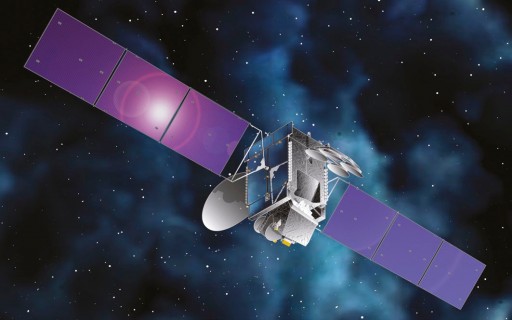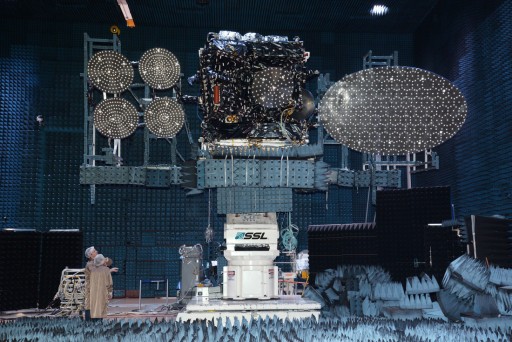Thor 7

Thor-7 is a commercial Geostationary Communications Satellite operated by Telenor, Norway, and built by Space Systems Loral, California. The satellite carries a Ku/Ka-Band payload to deliver broadband communications to European and surrounding regions.
The satellite is based on SS/L’s well proven LS-1300 satellite bus that is capable of hosting powerful communications payloads with high power demands. Thor-7 has a dry mass of 1,800 Kilograms and a launch mass around 4,600kg, measuring 4.7 by 3.4 by 2.7 meters in its launch configuration and having a span of 24.8 meters when in its deployed configuration.
LS-1300 is a flexible satellite platform that can be flown in different configurations to accommodate different communication payloads with a total power of 5 to 18kW. Using different configurations, LS-1300 satellites can weigh from 2,200 up to 6,700 Kilograms featuring payloads of 12 to 150 transponders.
LS-1300 was introduced in the late 1980s, but undergoes constant modifications going through a number of revisions over the years.
Thor-7 does not use the high-power variant of LS-1300, only featuring two three-panel solar arrays that deliver power to a dedicated system that conditions the satellite’s power bus and controls the state of charge of the vehicle’s batteries. Three-axis stabilization and navigation is accomplished by state of the art navigation sensors and reaction wheels.
The satellite is equipped with a chemical propulsion system for orbit-raising and stationkeeping using a main apogee engine and a series of attitude control thrusters. LS-1300 also provides the option of an additional electric propulsion system, whether this option is exercised for Thor-7 is not known.

The Thor-7 satellite carries a Ku-Band payload consisting of 21 transponders and a 25-transponder Ka-Band system capable of providing spotbeam coverage to several regions. The Ku-Band payload delivers service to Central and Eastern Europe from as far south as Greece and Italy to the northernmost regions of Norway and the Barents Sea, and from the western region of Norway as far east as the Ukraine. The Ku-Band payload is used to serve the growing broadcasting demands in the region.
The Ka-Band system of the satellite delivers a number of spot beams to cover key maritime areas including the North Sea, Norwegian Sea, Red Sea, Baltic Sea, the Persian Gulf and the Mediterranean. High data rate broadband services are offered to the maritime industry by the Thor 7 satellite with a total of 25 simultaneously active spotbeams with a data throughput up to 9 Gbps. User data rates will be between 2 and 6 Mbps and spot beam handover is seamless.
The Thor 7 spacecraft will also establish a link to the Troll ground station in Antarctica for the uplink of data from various satellites in polar orbits and distribute data to operators in Europe and the U.S.
The satellite will operate from an orbital position of 0.8° West for a mission of at least 15 years.
